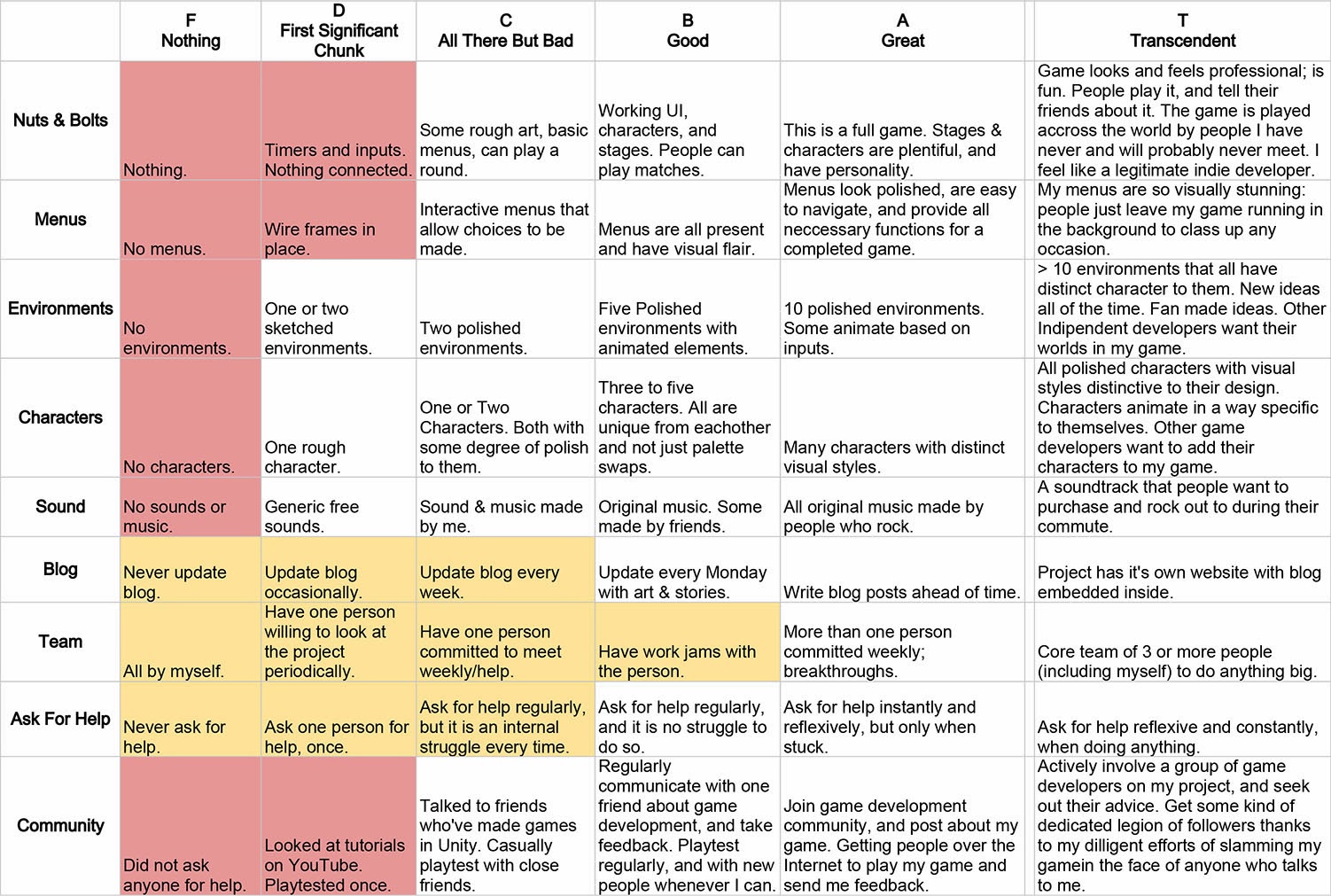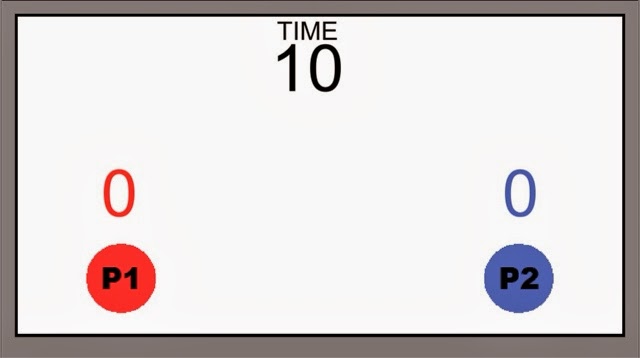When I first started talking to my friends about FIST CHAMPION we decided the controls for the game were going to be kept simple. Taking that to an extreme: I made the most basic form of the game be a single button masher. It took very little time to put together, and that was pretty cool. However, very early on, Brandt Andrist came up with the idea of a more advanced "2-Button" style of gameplay. We started talking about how that could open up all sorts of new strategies for play rather than just a straight up button masher.
It's kind of funny how just adding a second button to a game can make the game itself so much more complex.
For the final game, I decided, there would be the standard mode of play that the game would default to, and there would also be Advanced Mode. THE MOMENT I sat down to start scripting Advanced Mode, I hit a weird mental brick wall. I had spent a lot of time talking to my friends about how this would work, and it all seemed pretty straight forward, but the actual act of writing how that functions as a mechanic in Scripting (with my level of ability anyway) seemed like a suddenly very daunting task.
Here is the originally proposed method for Advanced Mode:
1. When gameplay starts, both players begin on the same button.
2. after a short time, when one player starts getting ahead: the losing player can switch to another button to effectively block all button presses done by the winning player on the original button.
3. The previously winning player needs to switch to the new button in order for any presses to mean anything.
The problem with this mode of play is that it runs into too many problems involved with how long it takes to decide who is actively winning or losing a round, and what happens when the originally winning player suddenly becomes the losing player without having switched buttons.
Right now I am leaning more towards something like this instead:
1. Both players have a stamina meter on screen during gameplay. The primary button drains the meter, and the secondary button replenishes.
2. If the player drains their meter: no button presses for that player are valid, and the player must now wait for a time for the gauge to replenish itself.
And yet, I also think that there could be another way of handling this... Maybe something more like the way that riding a horse in Zelda is handled? a highly limited gauge that encourages more of a rhythm than speed to keep going. I could picture this being really intense for people playing. Especially when someone falls behind, and the struggle to catch back up.
For those of you who might not know what I mean, here's a helpful video (applicable part is 57 seconds in) :
What do you think? I would really like to hear some feedback on this.








